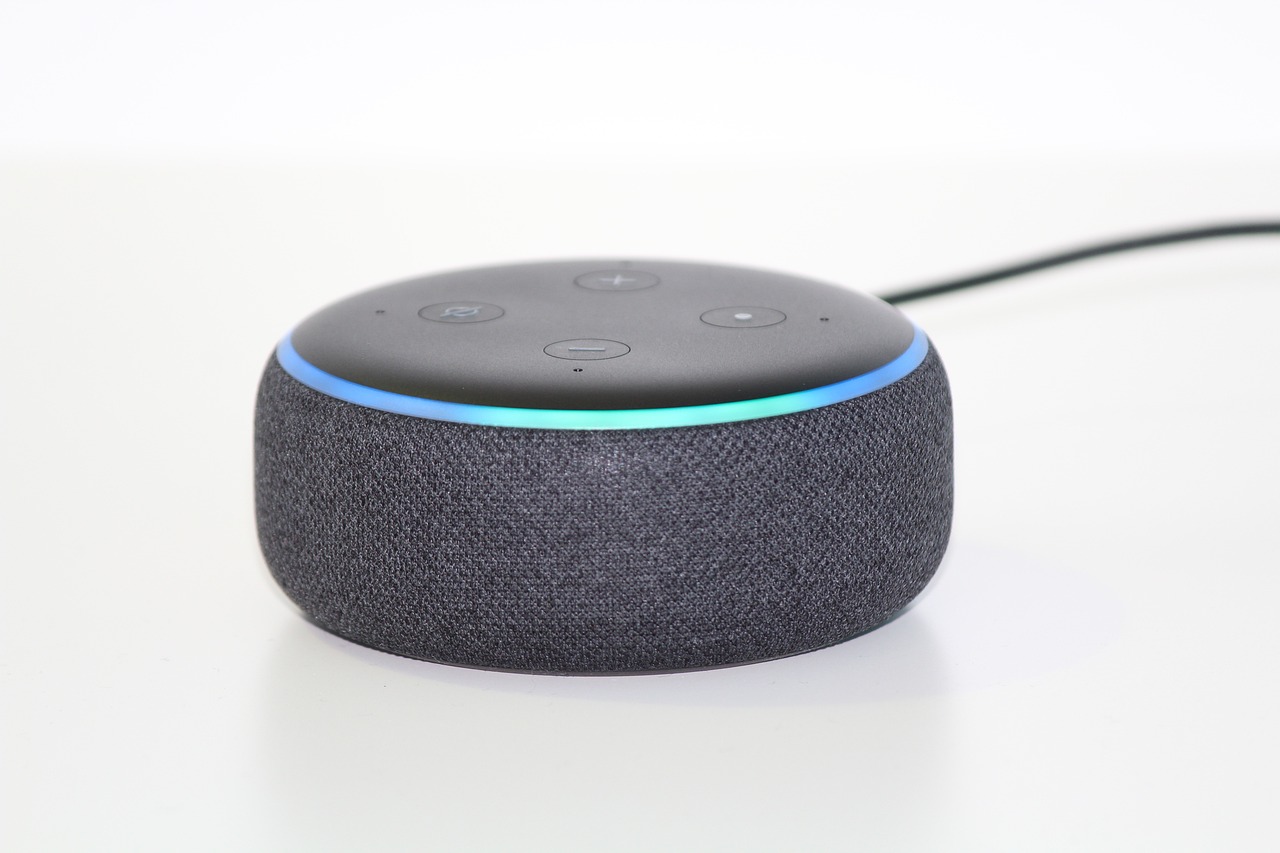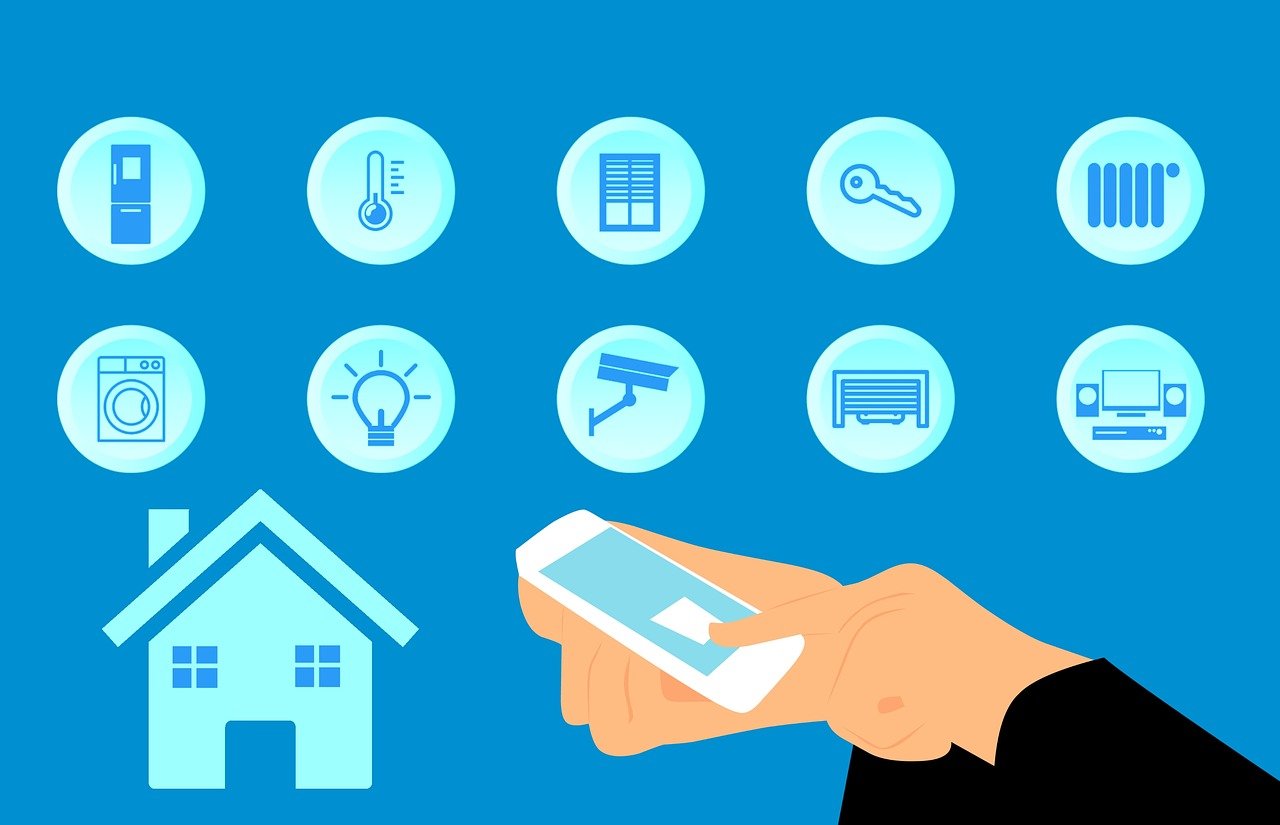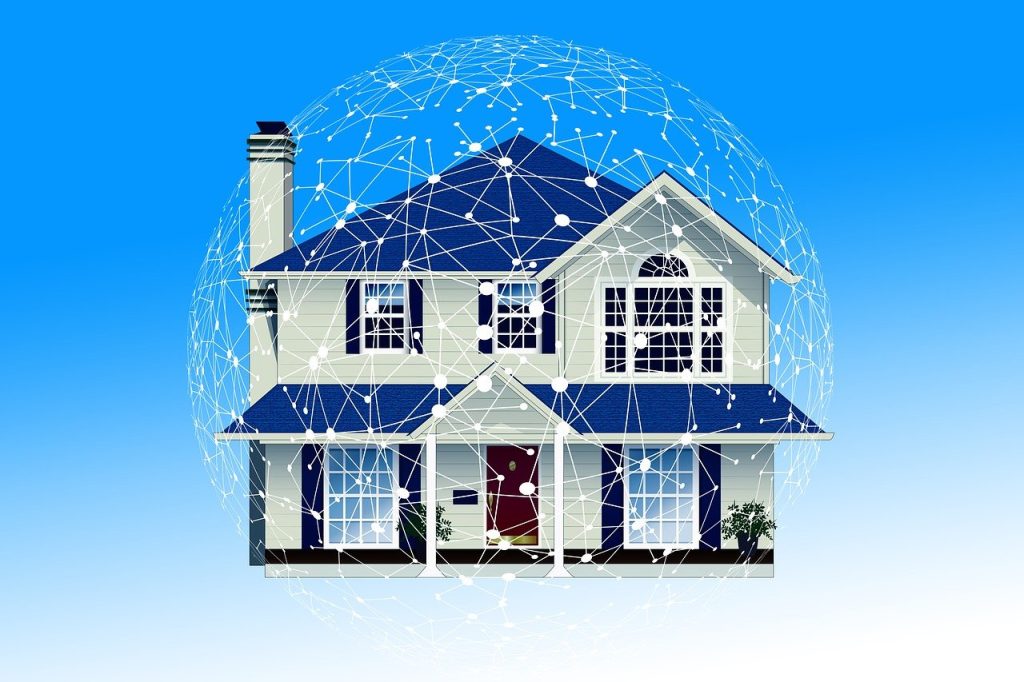What is a Smart Home Device? Unlock the Future of Connected Living and Experience the Magic of Automation. Let’s step into a world where everyday tasks are seamlessly automated and your home becomes a hub of convenience and innovation.
What is a Smart Home? Definition and Concept of a Smart Home
A smart home is a high-tech house where devices are connected and controlled remotely. It makes life easier by automating tasks and keeping you safe.
It uses sensors and networks to control lights, temperature, appliances, and security. The goal is to save energy and make everything work together smoothly. It’s like having a super-smart home that makes life more comfortable and convenient.
Benefits and Advantages of Smart Homes
Smart homes are really convenient. They save energy and money. They keep your home safe. You can control everything easily. Smart homes make life better.
Advantages of Smart Home Devices
Increased Convenience and Comfort
Smart homes offer convenience and comfort. Control devices remotely. Automate tasks. Personalize settings. Use voice commands. Connect with smart appliances. Enjoy a customized living experience.
Energy Efficiency and Cost Savings
Smart homes offer the following advantages in terms of energy efficiency and cost savings:
- Real-time monitoring of energy consumption
- Automated control of devices based on occupancy and schedules
- Optimization of heating, cooling, and lighting for energy efficiency
- Integration with smart thermostats for efficient temperature regulation
- Utilization of LED lighting and dimming features
- Remotely controlling devices to avoid unnecessary energy usage
- Integration with renewable energy sources, such as solar panels
- Lower utility bills through reduced energy waste and optimized usage
By implementing these energy-saving features, smart homes contribute to a more sustainable environment and save money for homeowners.
Enhanced Security and Safety
Smart homes offer:
- Remote monitoring via cameras and surveillance systems.
- Smart locks and access control for secure entry.
- Motion detection and real-time alerts for threat awareness.
- Integration with alarm systems and deterrents.
- Integration with intelligent surveillance for accurate detection.
- Automated safety protocols for accident prevention.
- Remote control and monitoring for convenience and vigilance.
These features enhance security and safety, providing homeowners with peace of mind.
Related: What is the Importance of Cyber Security in the Digital World?
Integration and Control
Smart homes are awesome! You control everything from one spot. Devices talk to each other and do things automatically. Use your voice to control them too! Add more devices later. Make your home super-powered!
Smart Home Features
Voice Control and Automation
Smart homes make life easier by letting you use your voice to control things, do tasks automatically, and connect different devices together. It’s like having a helpful friend in your house!
Smart homes offer:
- Voice control for hands-free convenience
- Automatic task automation
- Customizable routines activated by voice commands
- Integration with various smart devices
- Improved accessibility for individuals with disabilities
Connectivity and Internet of Things (IoT)
Smart homes are special homes that can talk to each other through the Internet. This helps them work together and make life easier. You can control smart devices from far away and check on things when you’re not home. Smart homes are very clever and make living better.
Sensor Technology and Data Analysis
Smart homes use special sensors to collect data about the home. This data helps make the home more comfortable and saves energy. It also helps personalize settings and keep the home safe.
Customization and Personalization
Smart homes are unique because they can be customized just for you. They remember your preferences and can do things automatically. It’s like having a helpful friend that knows exactly what you like.
What is a Smart Home Device? 
Definition and Role of Smart Home Devices
Smart home devices are special gadgets that make our homes even smarter. They help us do things easier and keep our homes safe. There are different types of smart home devices like control devices, safety devices, and entertainment devices. They work together to make our homes more connected and clever.
Smart home devices:
- Control Devices
- Environmental Control Devices
- Security and Safety Devices
- Entertainment and Multimedia Devices
- Appliance Control Devices
Common Types of Smart Home Devices
Smart home devices encompass a wide range of categories that contribute to the functionality and automation of a smart home. Some common types of smart home devices include:
- Smart speakers
- Smart thermostats
- Smart security cameras
- Smart door locks
- Smart lighting systems
- Smart appliances
These devices make our homes more convenient and efficient. They help us control and automate things in our homes.
Functionality and Applications
Smart home devices make life easier and more enjoyable. They automate tasks, save energy, and keep you safe. You can control them from anywhere and personalize your home. They even help with your health and entertainment. Experience the convenience and fun of smart home devices!
List of All Smart Home Devices
Categorizing Smart Home Devices
Smart home devices can be categorized into several groups based on their functionality and purpose. Here are some common categories of smart home devices:
- Control Devices:
- Smart hubs
- Voice assistants
- Smartphone apps
- Environmental Control Devices:
- Smart thermostats
- Smart lighting systems
- Smart blinds and shades
- Security and Safety Devices:
- Smart security cameras
- Smart door locks
- Smart smoke detectors
- Entertainment and Multimedia Devices:
- Smart TVs
- Smart speakers
- Streaming devices
- Appliance Control Devices:
- Smart plugs and outlets
- Smart appliances (e.g., refrigerators, washing machines)
- Health and Wellness Devices:
- Smart scales
- Sleep trackers
- Air quality monitors
- Access Control Devices:
- Smart doorbells
- Smart garage door openers
- Smart intercom systems
- Energy Management Devices:
- Smart energy monitors
- Solar energy systems
- Smart power strips
- Irrigation and Garden Devices:
- Smart sprinkler controllers
- Soil moisture sensors
- Garden watering systems
- Pet Care Devices:
- Smart pet feeders
- Pet activity trackers
- Automated litter boxes
These categories include different types of smart home devices. Each device has a special job and makes your smart home even better.
Overview and Examples of Each Category
Here is a brief overview of each category of smart home devices:
1. Control Devices:
Smart hubs, voice assistants, and smartphone apps facilitate control and management of other smart devices.
2. Environmental Control Devices:
Smart thermostats, lighting systems, and blinds/shades allow for automated control of temperature, lighting, and window coverings.
3. Security and Safety Devices:
Smart security cameras, door locks, and smoke detectors enhance home security and safety.
4. Entertainment and Multimedia Devices:
Smart TVs, speakers, and streaming devices provide enhanced multimedia experiences.
5. Appliance Control Devices:
Smart plugs/outlets and appliances offer remote control and automation of household devices.
6. Health and Wellness Devices:
Smart scales, sleep trackers, and air quality monitors help monitor and improve health and well-being.
7. Access Control Devices:
Smart doorbells, garage door openers, and intercom systems provide secure access to the home.
8. Energy Management Devices:
Smart energy monitors, solar energy systems, and power strips optimize energy usage and efficiency.
9. Irrigation and Garden Devices:
Smart sprinkler controllers and soil moisture sensors automate watering and garden maintenance.
Each category consists of various devices designed to enhance convenience, security, energy efficiency, and overall smart home functionality.
Disadvantages of Smart Homes
Privacy and Security Concerns
Here are some key privacy and security concerns to consider when using smart home devices:
- Data Privacy: Ensure manufacturers have strong data protection measures in place and review their data privacy policies.
- Device Vulnerabilities: Keep devices updated with the latest firmware, use strong passwords, and enable two-factor authentication.
- Network Security: Use secure Wi-Fi protocols and implement a robust network firewall to protect against unauthorized access.
- Third-Party Access: Understand data sharing practices and permissions required by integrations with third-party services.
- Voice Assistant Privacy: Review and manage voice recordings stored by voice assistants and adjust privacy settings as needed.
- Device Compatibility: Ensure compatibility and security standards when integrating devices from different manufacturers.
- Physical Security: Keep devices secure and utilize remote wiping or locking features in case of theft.
- Default Settings and Passwords: Change default settings and passwords to strengthen device security.
- Regular Updates: Keep devices and associated apps up to date with the latest firmware and software updates.
- Vendor Reputation: Choose reputable manufacturers prioritizing privacy and security in their devices.
By addressing these concerns, users can enhance the privacy and security of their smart home devices and maintain a safer digital environment.
Technical Complexity and Reliability Issues
Smart homes can sometimes be tricky to set up and maintain due to technical complexity, and there may be occasional reliability issues to overcome.
The Future of Smart Homes
Here are some key points about the future of smart homes:
- Increased Interconnectivity: Smart devices will communicate and integrate seamlessly within the home.
- Artificial Intelligence (AI) Integration: Artificial Intelligence technologies will enable intelligent automation and personalized experiences.
- Enhanced Energy Management: Smart homes will optimize energy consumption and incorporate renewable energy sources.
- Smarter Security Systems: Advanced security systems with facial recognition and real-time monitoring will improve safety.
- Voice and Gesture Control: Interaction with smart devices will be more natural and intuitive.
- Augmented Reality (AR) and Virtual Reality (VR) Integration: AR and VR may enhance experiences and remote monitoring.
- Health and Wellness Focus: Smart homes will support personalized health monitoring and promote well-being.
- Expansion of the Internet of Things (IoT): More devices will become interconnected for automation and data sharing.
- Sustainability and Green Living: Smart homes will embrace eco-friendly practices and sustainable features.
- Integration with Smart Cities: Smart homes will be part of larger initiatives, integrating with urban infrastructure and services.
The future of smart homes will bring increased convenience, personalization, efficiency, and sustainability to our living spaces.
Emerging Trends and Innovations
Let’s see some smart home trends and innovations:
- Advanced voice assistants
- Edge computing for faster processing
- Smart Home as a Service (SHaaS)
- Improved integration and interoperability
- Smarter sensor technology
- AR and VR integration
- Focus on sustainability and green solutions
- AI for predictive analytics
- Enhanced data security and privacy
- Personalized experiences and adaptive automation.
These trends drive the evolution of smart homes, making them more intelligent, user-friendly, sustainable, and secure.
Potential Challenges and Opportunities
Smart homes have challenges like compatibility, privacy, complexity, cost, skills, energy use, support, and ethics. However, opportunities exist to improve integration, security, usability, accessibility, education, sustainability, support, personalization, ethics, and inclusivity. By addressing these challenges, smart homes can become more accessible, secure, user-friendly, and beneficial for all.
Conclusion
Smart home devices make life easier, save energy, keep us safe, and make our homes special. When we use these devices, our lives become better and our homes become smarter and more fun. Let’s welcome the future of smart homes and enjoy a better way of living.
FAQ
- What is a smart home device?
It’s a device that makes your home smarter and can be controlled remotely.
- How do smart home devices help?
They automate tasks, save energy, and enhance security and convenience.
- Are smart homes secure?
Yes, with encryption and regular updates for protection.
- Can I customize smart home devices?
Absolutely! You can personalize settings and preferences.
- Are smart homes energy-efficient?
Yes, they help save energy and reduce costs.
- What’s the future of smart homes?
Expect AI, voice control, and seamless integration for even smarter homes.


